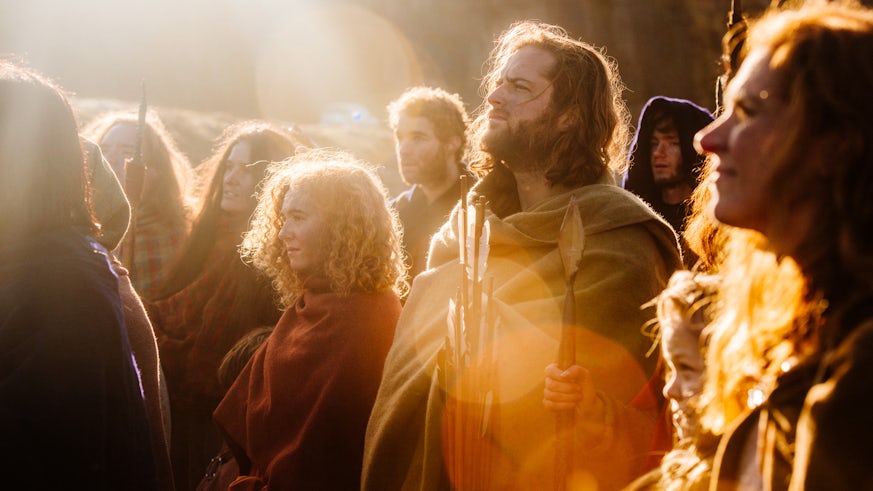Where do we come from? DNA Cymru
20 November 2015

Cardiff academics participate in S4C’s DNA Cymru to answer the big questions
Academics from Cardiff University are sharing their research to help answer the big question: Where do we come from? in new multi-media project Cymru DNA Wales.
The series has been produced in collaboration with Cardiff University’s School of History, Archaeology and Religion and other academic institutions.
Using cutting-edge technology to sample the Welsh population today, DNA Cymru follows the story way back beyond the reaches of written records. The series is part of the innovative project DNACymruWales – aiming to answer some of our major questions: 'Who are we?' 'Where did we come from?' 'What connects us with the rest of the world's people?' 'What makes us different?'
The first programme (Sunday 22 November 8pm, S4C) asks: Who are the Welsh? What links us to the rest of the world? And what sets us apart?
In this initial episode, entertainer Caryl Parry Jones, broadcaster Roy Noble and Wales and Scarlets hooker, Ken Owens hear that they’re related to three different groups who came to Wales after the Ice Age – the earliest Hunter-Gatherers; the First Farmers; and the Beaker People. These are the three pre-historic influxes mainly responsible for the genetic composition of the people of Europe today.
The episode focuses on the Caerau hillfort excavations undertaken by the CAER Heritage Project, a collaborative project between Cardiff University and Action in Caerau and Ely. It asks ‘Who were the ancestors of the people who lived in hillforts like this?”
In programme three (6 December 8pm, S4C), the series moves forward in time. For a millennium and more, Romans and Saxons, Vikings and Normans targeted Wales. Their attacks changed the course of our history – but does their blood still flow in our veins today? Professor of Archaeology John Hines explains the significance of the ‘Viking’ skeletons discovered at Llanbedrgoch. This episode also features a computer generated reconstruction of the only crannog known from the British Isles outside Scotland and Ireland, Llangorse lake in Powys. The site was excavated jointly by Cardiff University staff and students and National Museum Wales staff.
In the series finale, Michael Sheen and Charlotte Church are amongst those who discover the secrets of their ancestral DNA. But what do tests like these prove about contemporary Wales? In this episode young and old residents of Caerau and Ely on the outskirts of Cardiff talk enthusiastically about how the CAER project has helped to change the way their community is thought about, as they discover their ancestral DNA results.
In the analysis of the largest ever sample of Welsh DNA, there are surprising revelations about genetic clusters on the male and female lines amongst the population today.
Professor John Hines said: ‘Contributing to this series has provided a welcome opportunity for us to show how archaeological work and techniques are continuing to uncover the depth and complexity of Welsh history. From excavated site to laboratory, teams are working together to add to our knowledge of the past population and their lives. Also of value is the opportunity to try to promote the use of Welsh in this field.’